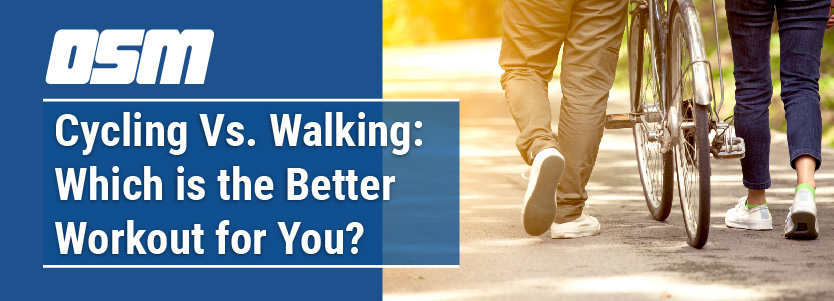Article featured on Healthline
Aerobic exercise is an important way to maintain your health and vitality. If you’re new to exercising or have an injury or health condition that’s forcing you to change your exercise routine, you may wonder what type of aerobic exercise to choose.
Cycling and walking are two of the most popular types of aerobic activity. Both can be adapted for beginners or people with injuries or other health conditions.
They both provide a lower impact activity than other aerobic activities, such as running or jumping rope. Also, you can do them both outdoors or indoors, making them accessible no matter what the weather is like.
However, they tend to differ in terms of cost. Cycling obviously requires a bike, while all you need to start walking is a pair of shoes (or not) and the will to move.
Still, you may wonder which is the better workout and which is better for your health.
Which burns more calories?
How many calories you burn with cycling and walking depends on your workout intensity. The following table shows approximately how many calories a 150-pound (68-kg) person would burn in a 30-minute session.
Thus, cycling tends to burn more calories for the same category of intensity during the same time period. You can think of the intensity as the rate of perceived exertion.
If you want to burn calories and you’re short on time, cycling may be the better option.
Which works muscles better?
Cycling and walking involve using many of the same muscles to produce force to move. The gluteal muscles of the hip and hamstrings are involved in power production in both walking and cycling.
These muscles increase their activation when you increase your speed during cycling, especially when you stand up to pedal. In addition, gluteal activation increases when you walk uphill or up stairs.
The quadriceps (knee extensors) are involved to a larger extent in cycling compared with walking. They are larger producers of force during the power or push-down phase of cycling when you’re sitting down.
Finally, the calf muscles (soleus and gastrocnemius) play an important role in both cycling and walking. They are the muscles that propel you in the push phase of cycling and the push-off phase of walking (mid-stance to pre-swing phases).
Thus, both activities work the same muscles, but cycling tends to require the muscles to exert more force.
Cycling and walking use many of the same muscles to produce force and movement. However, cycling tends to work your muscles harder.



